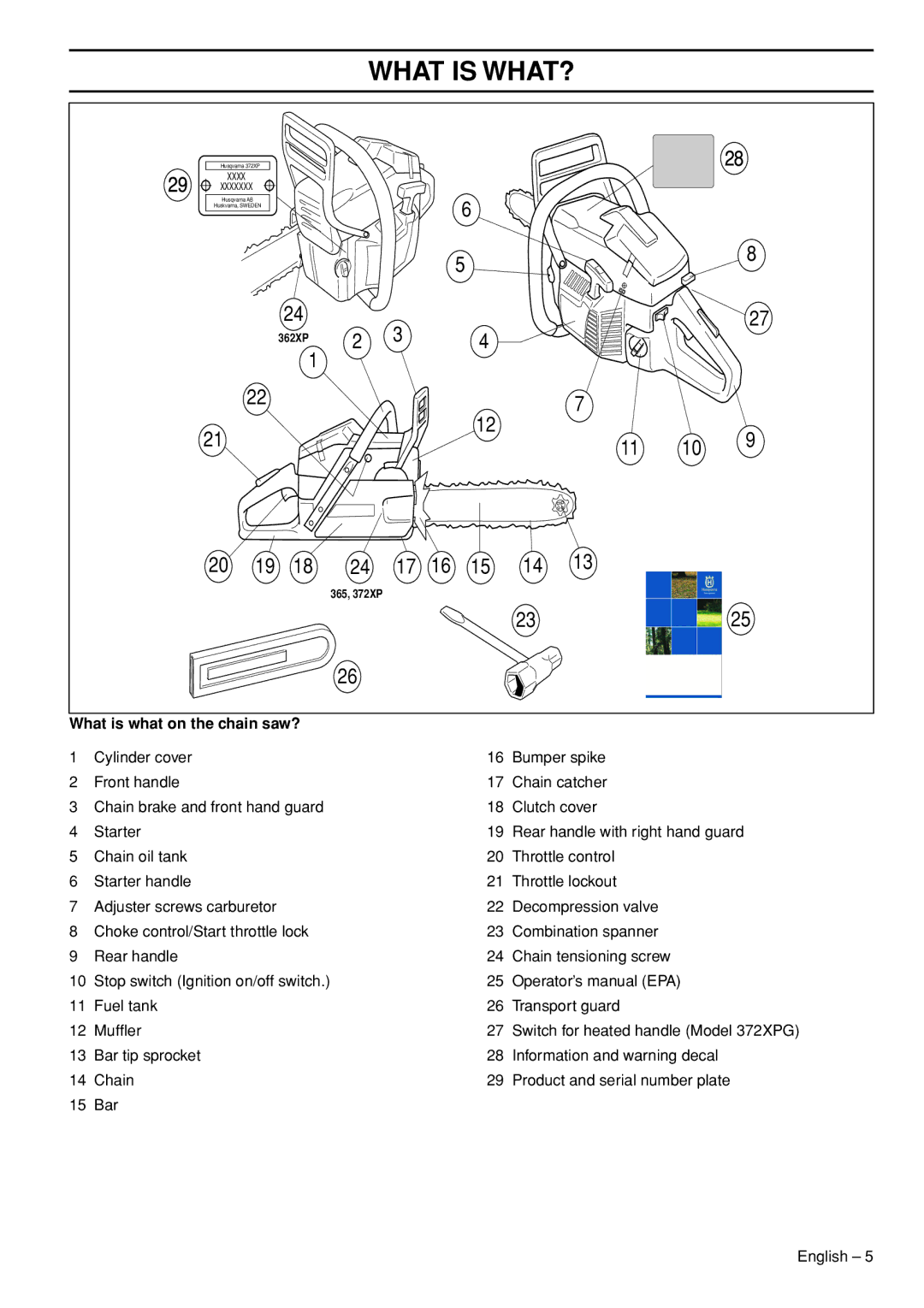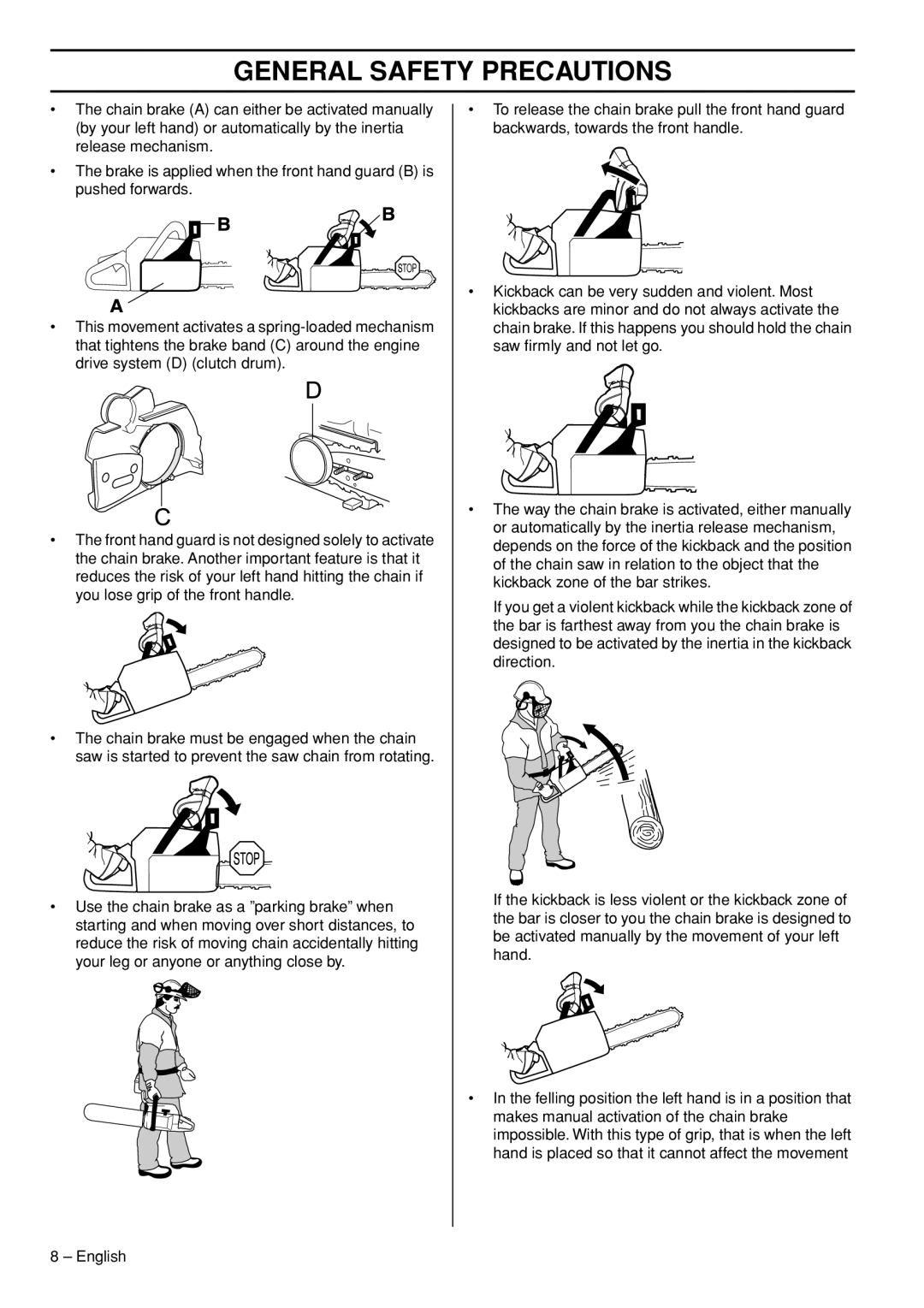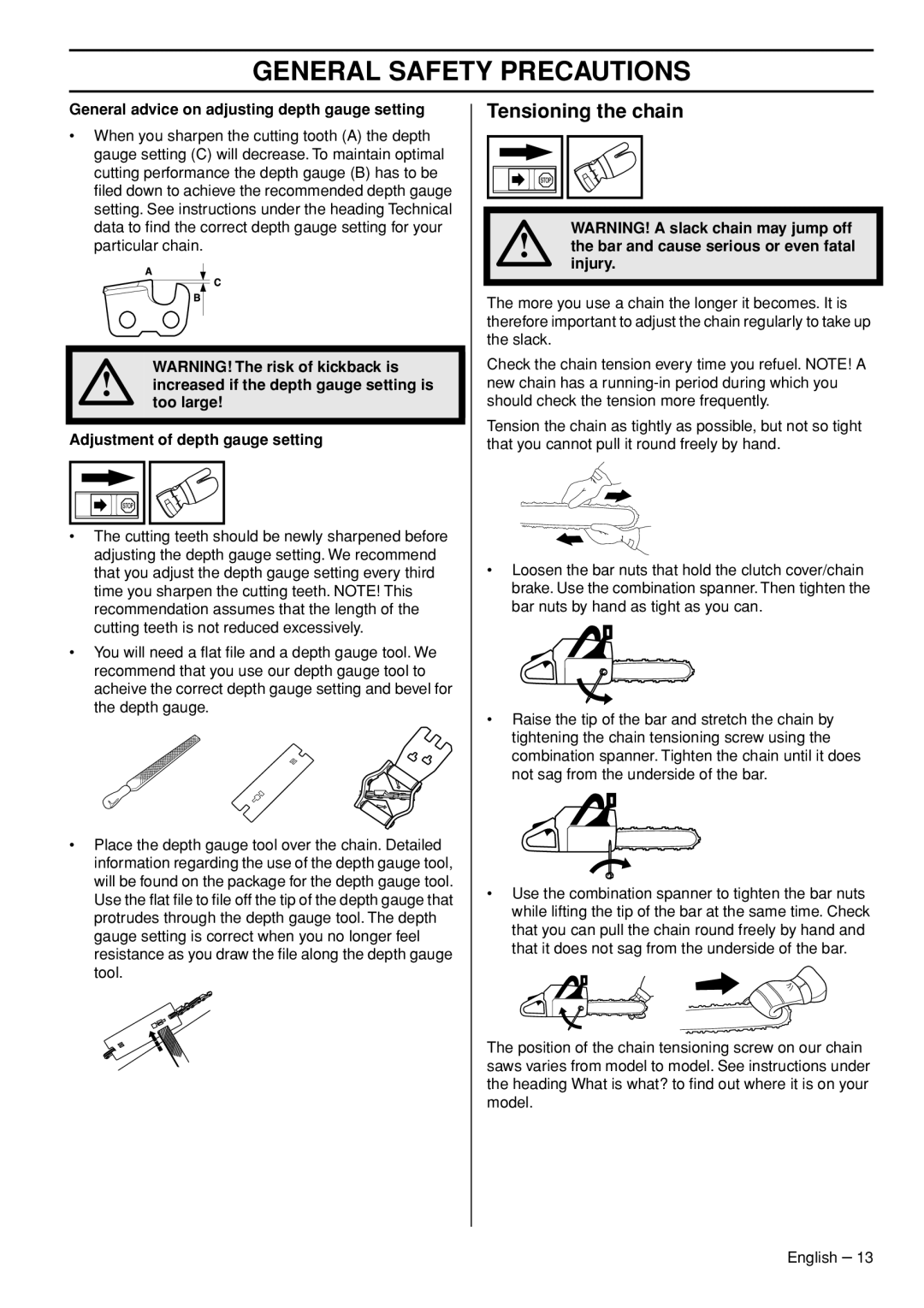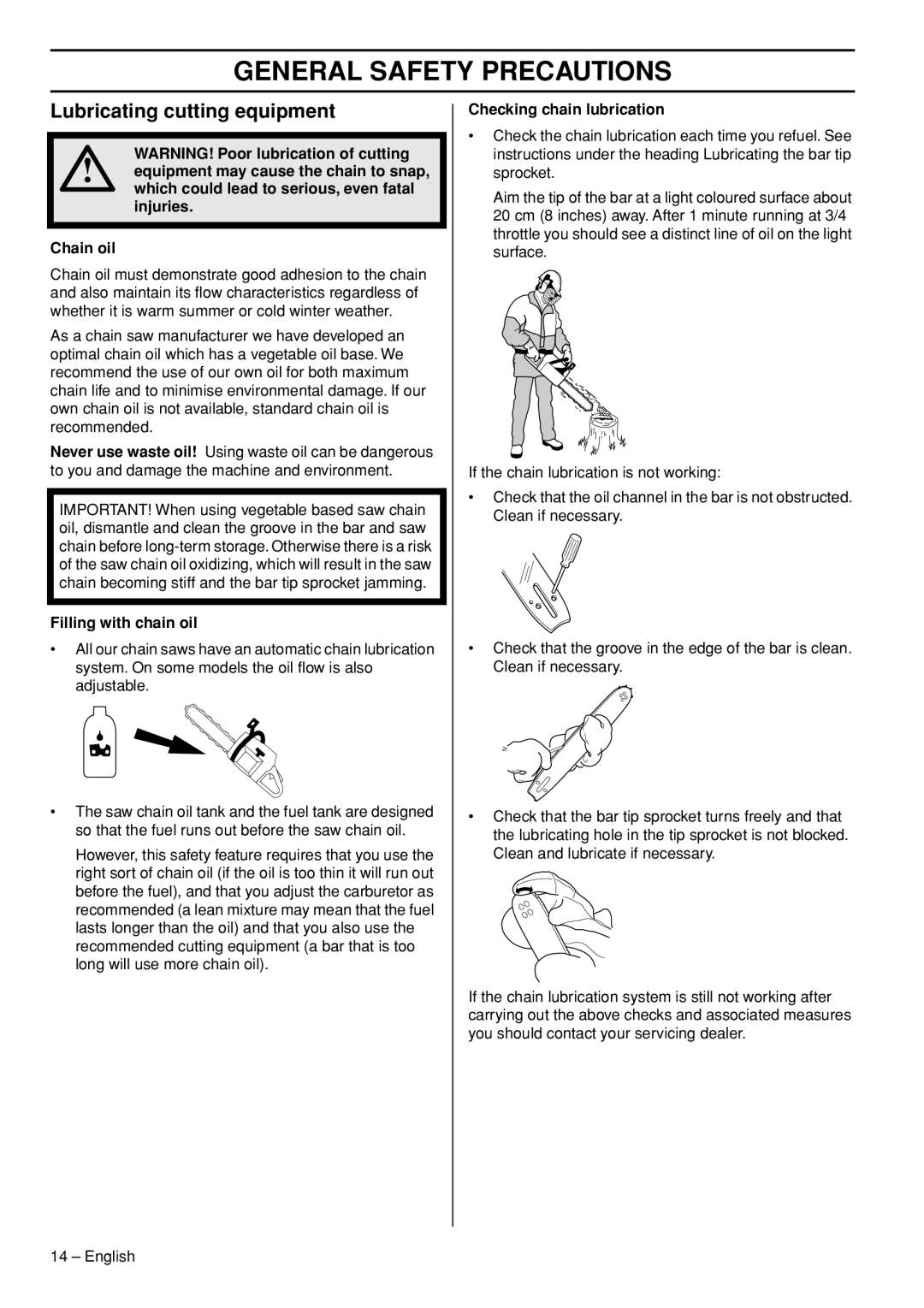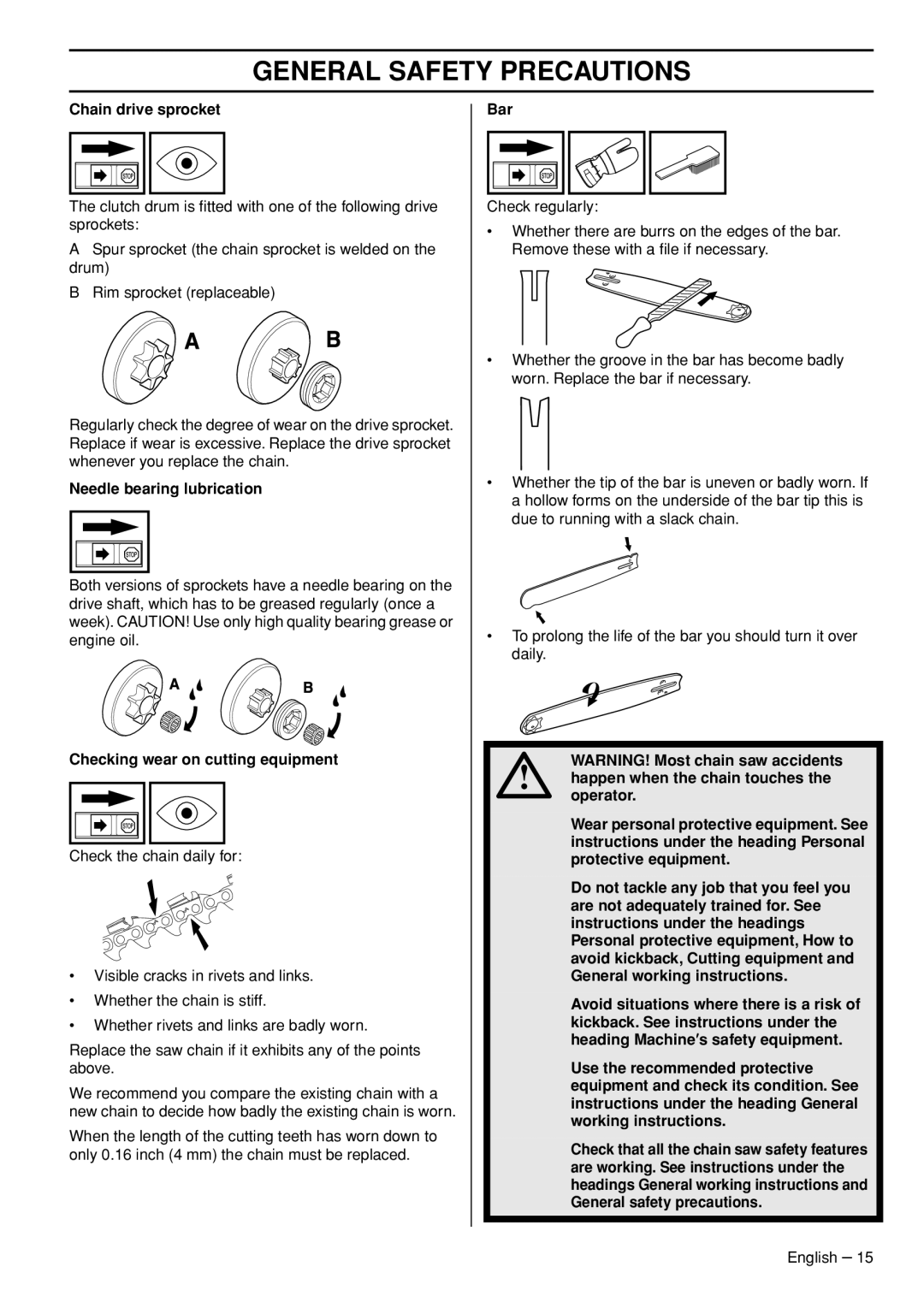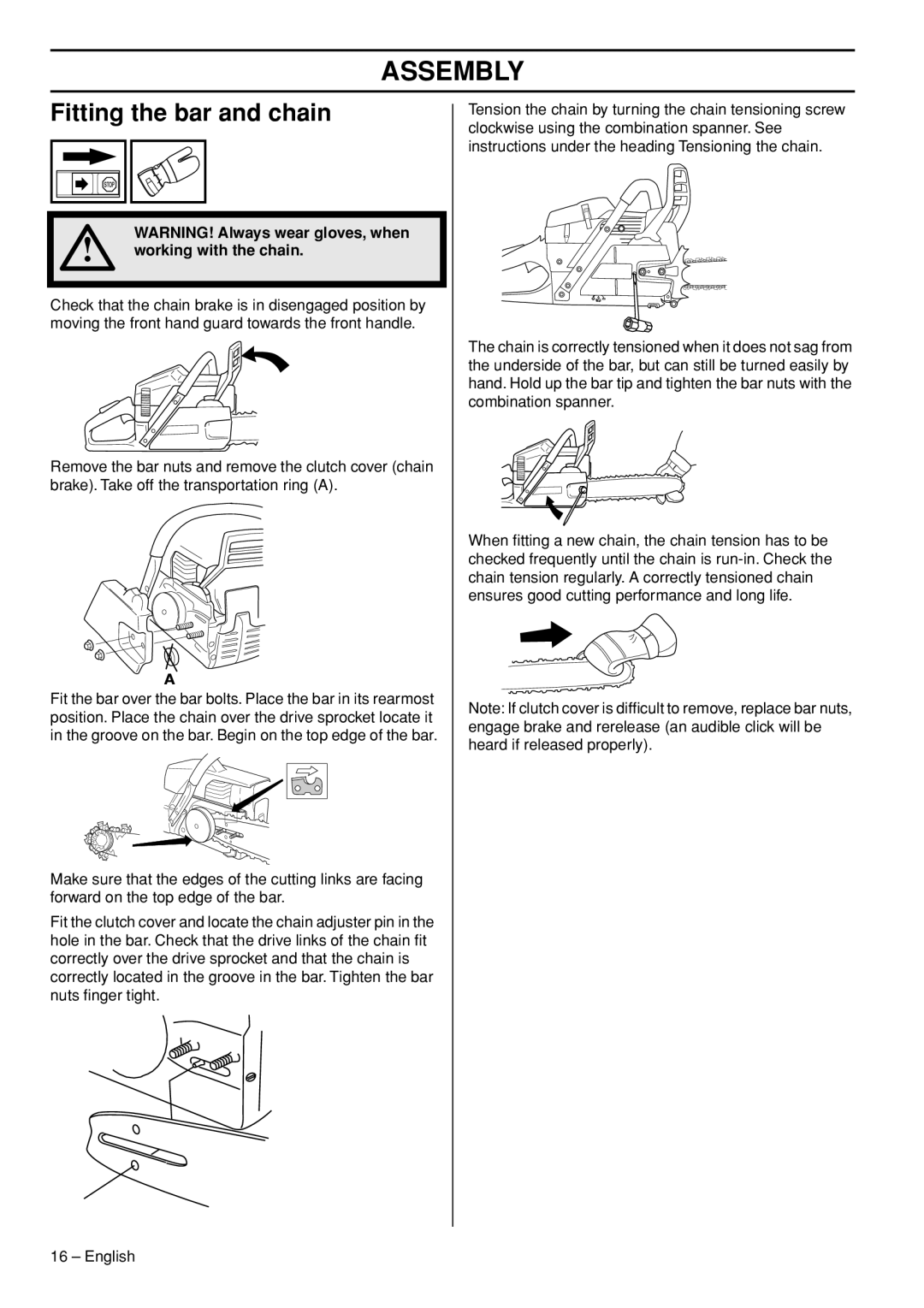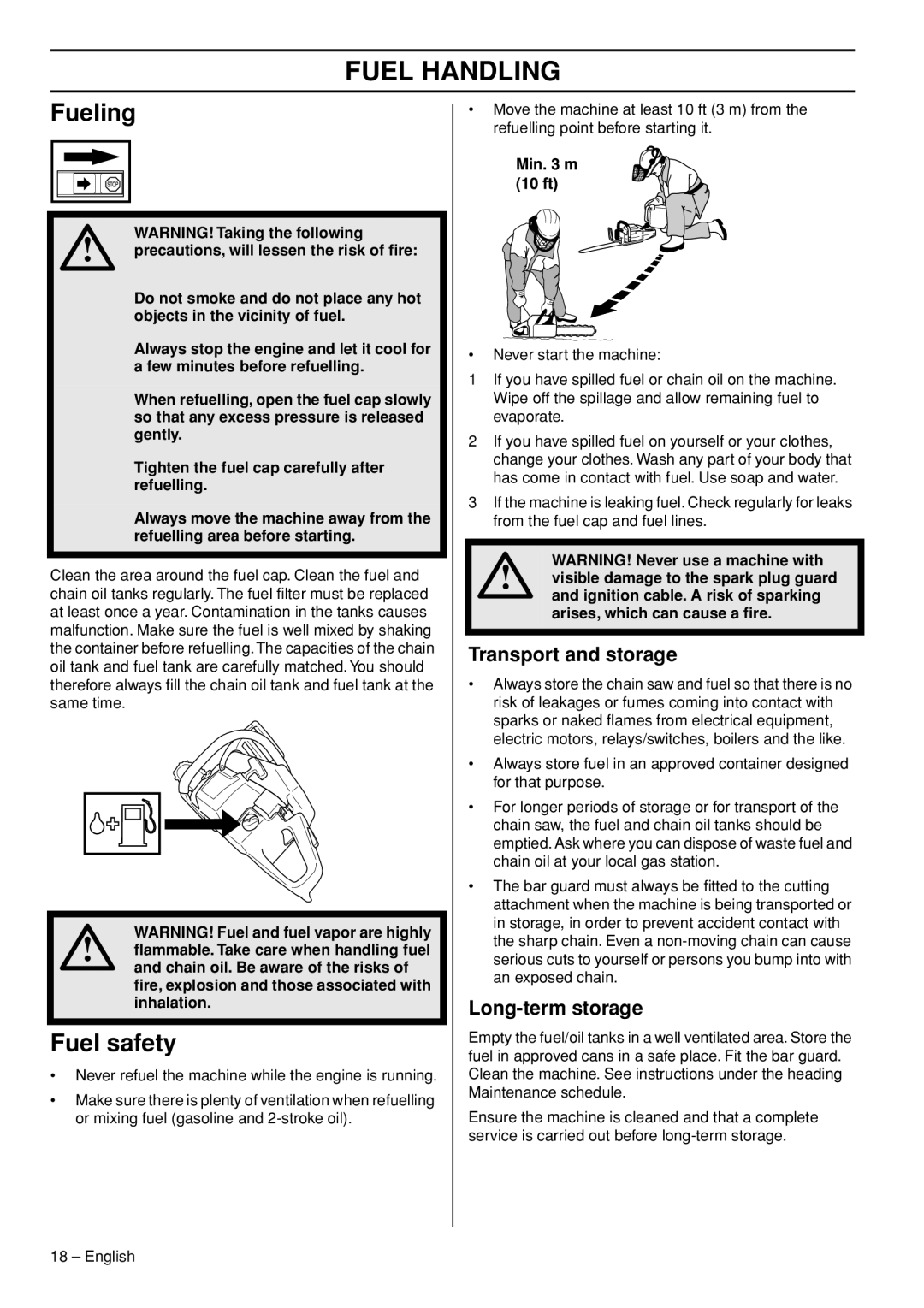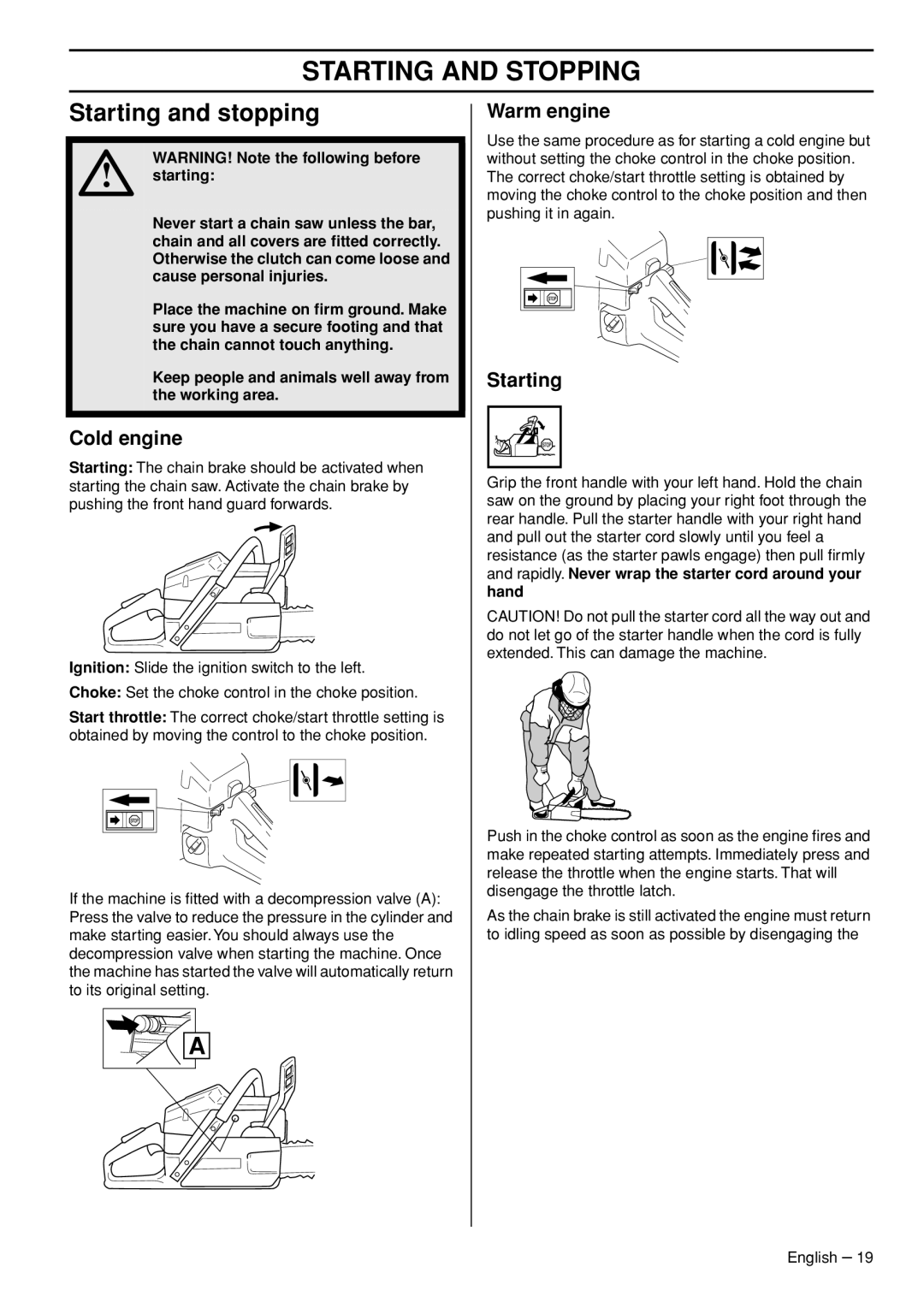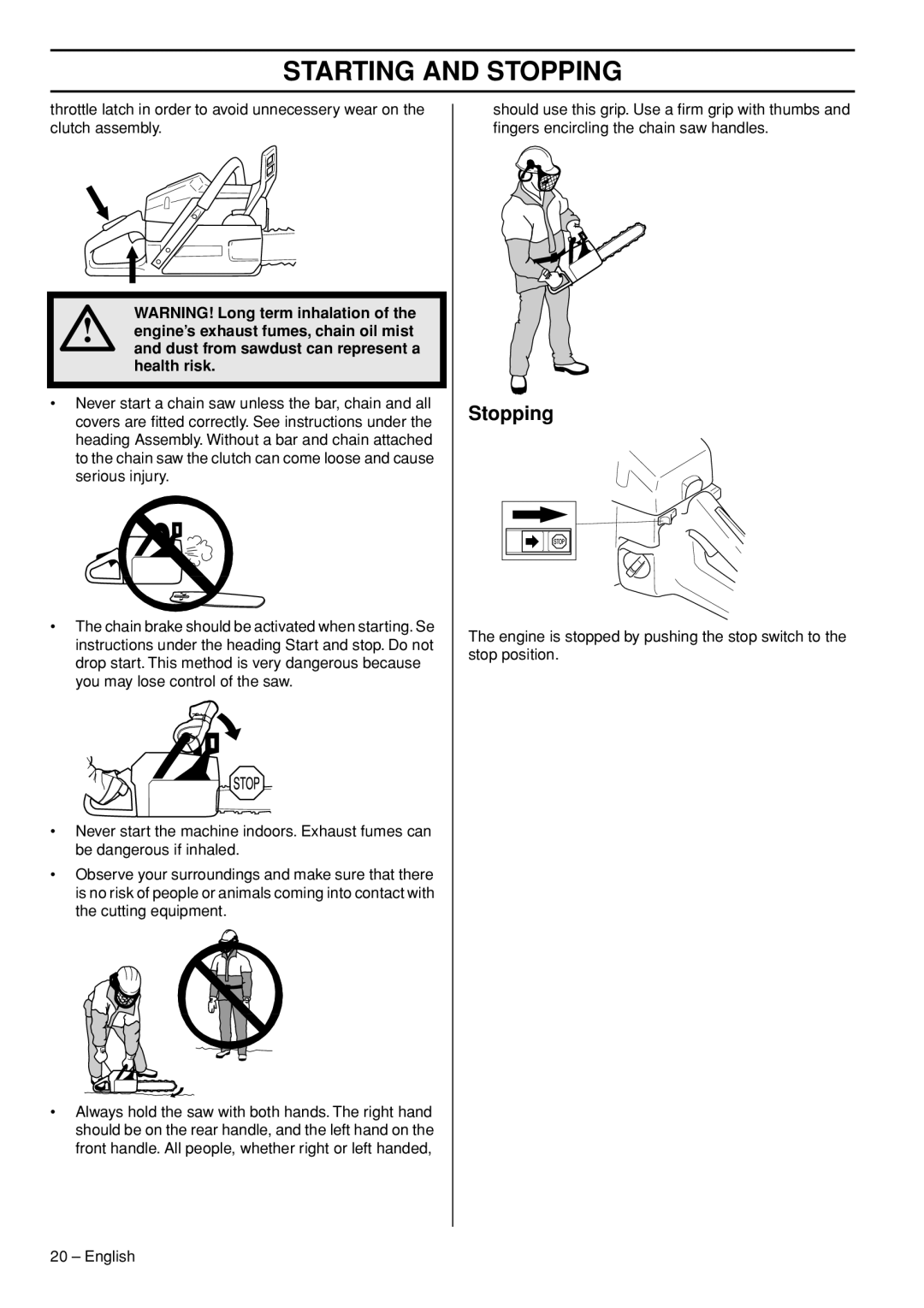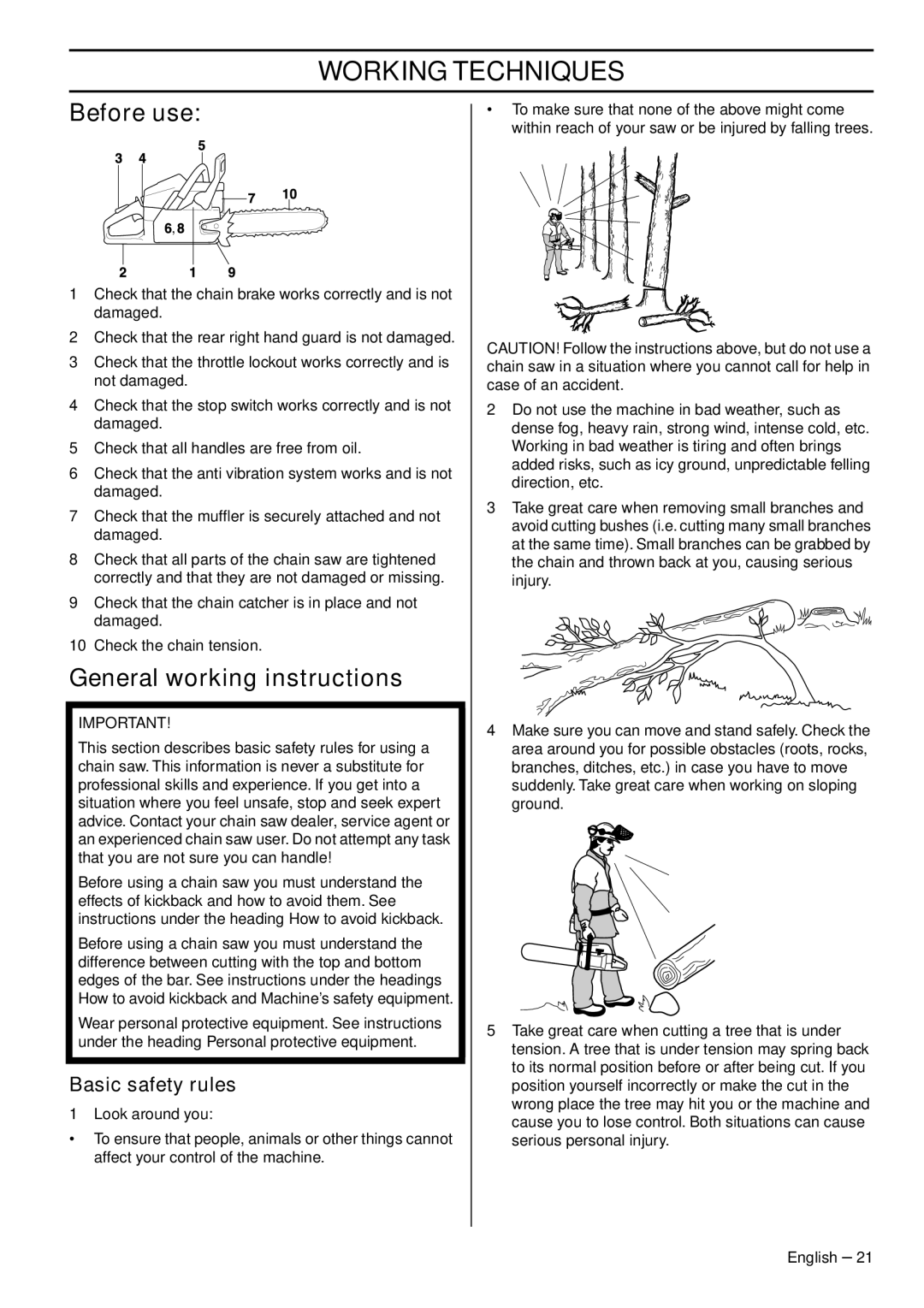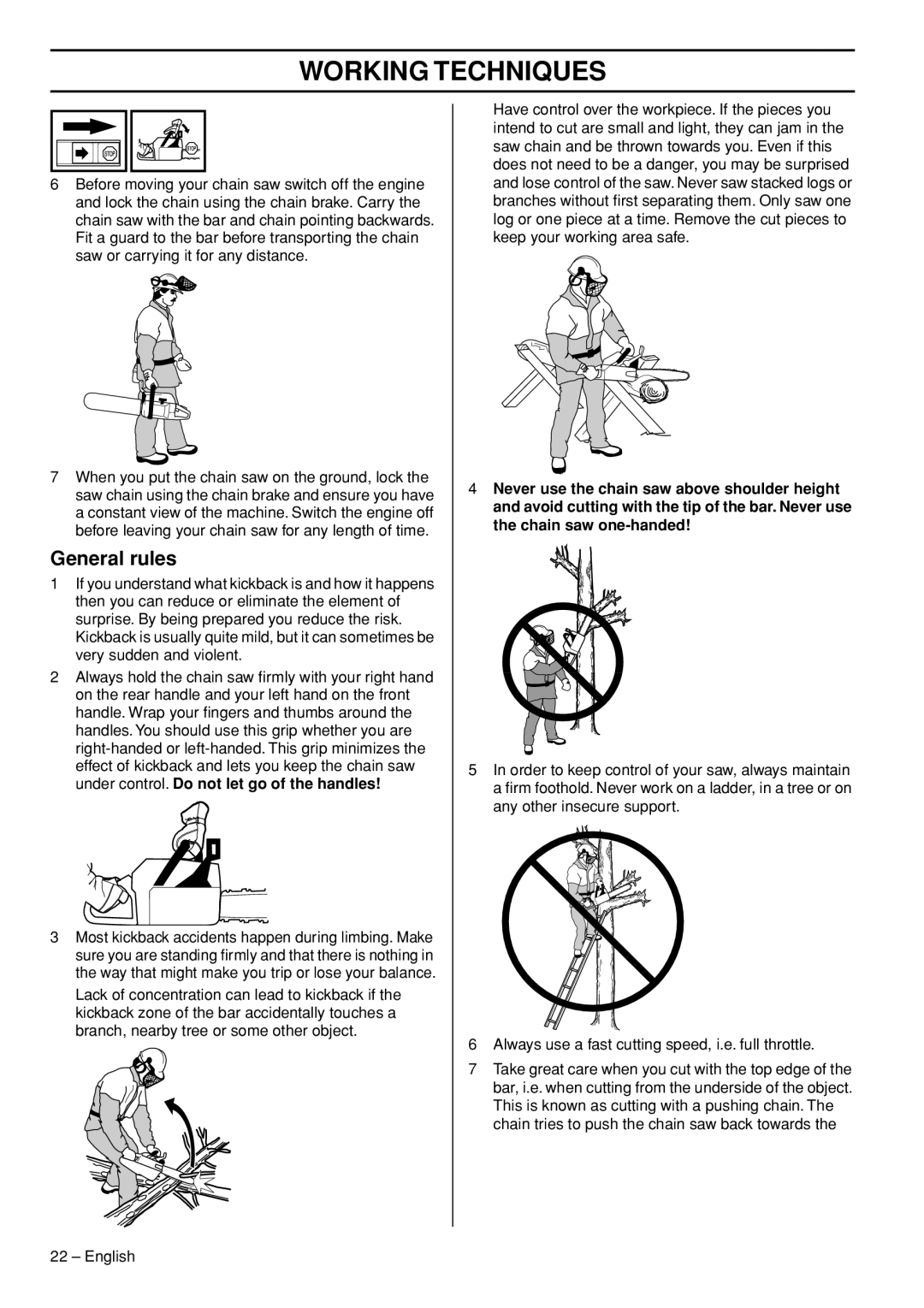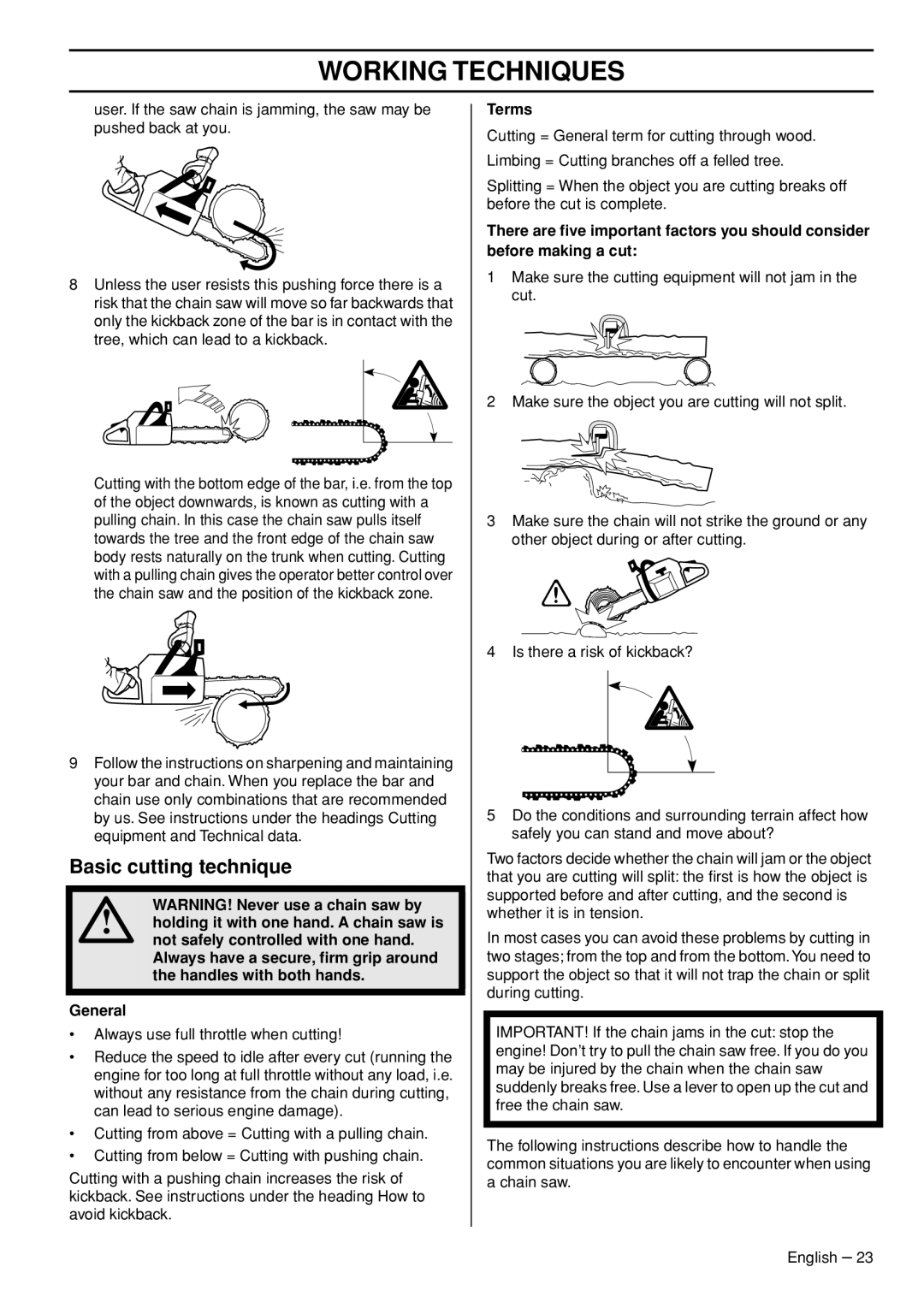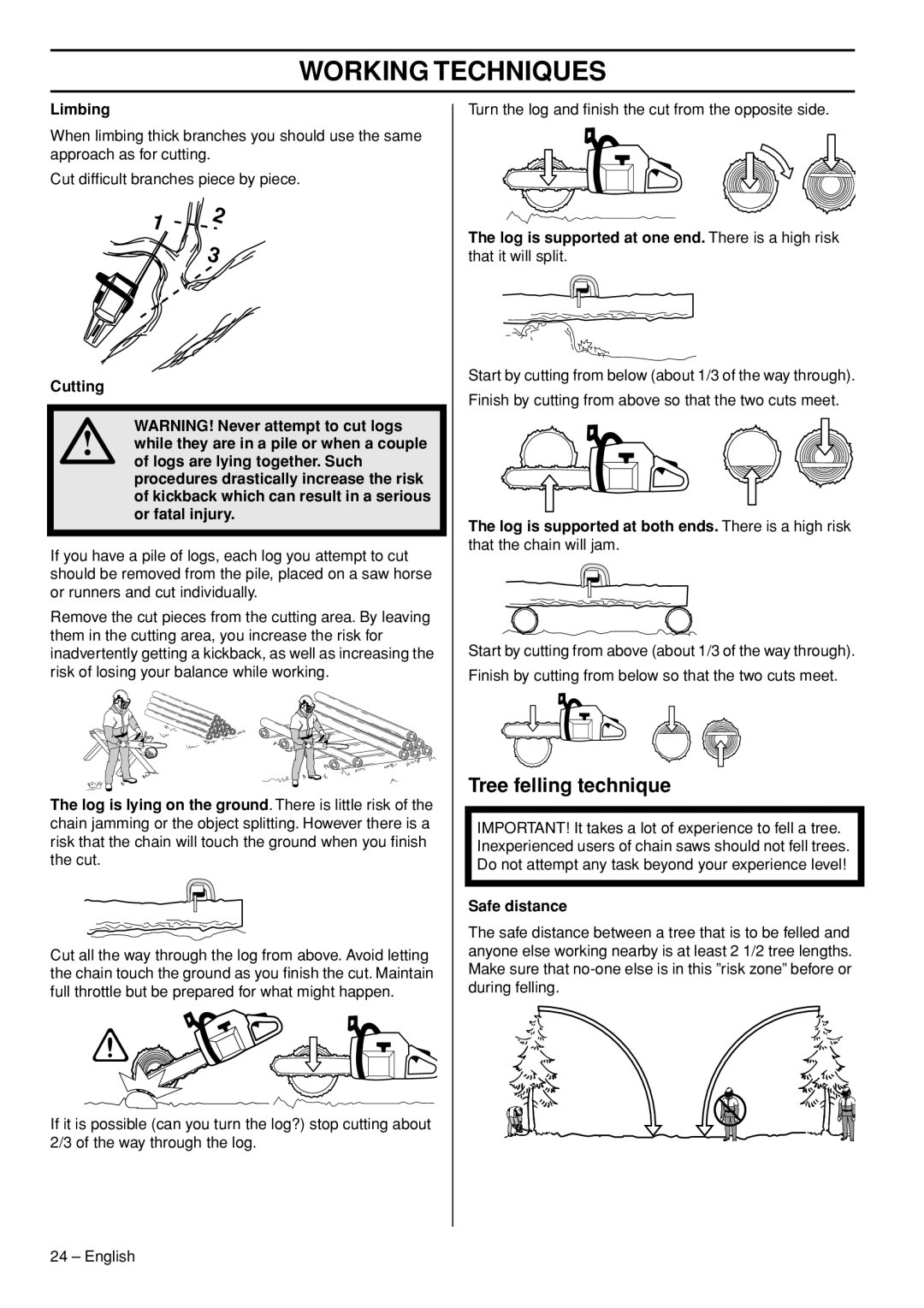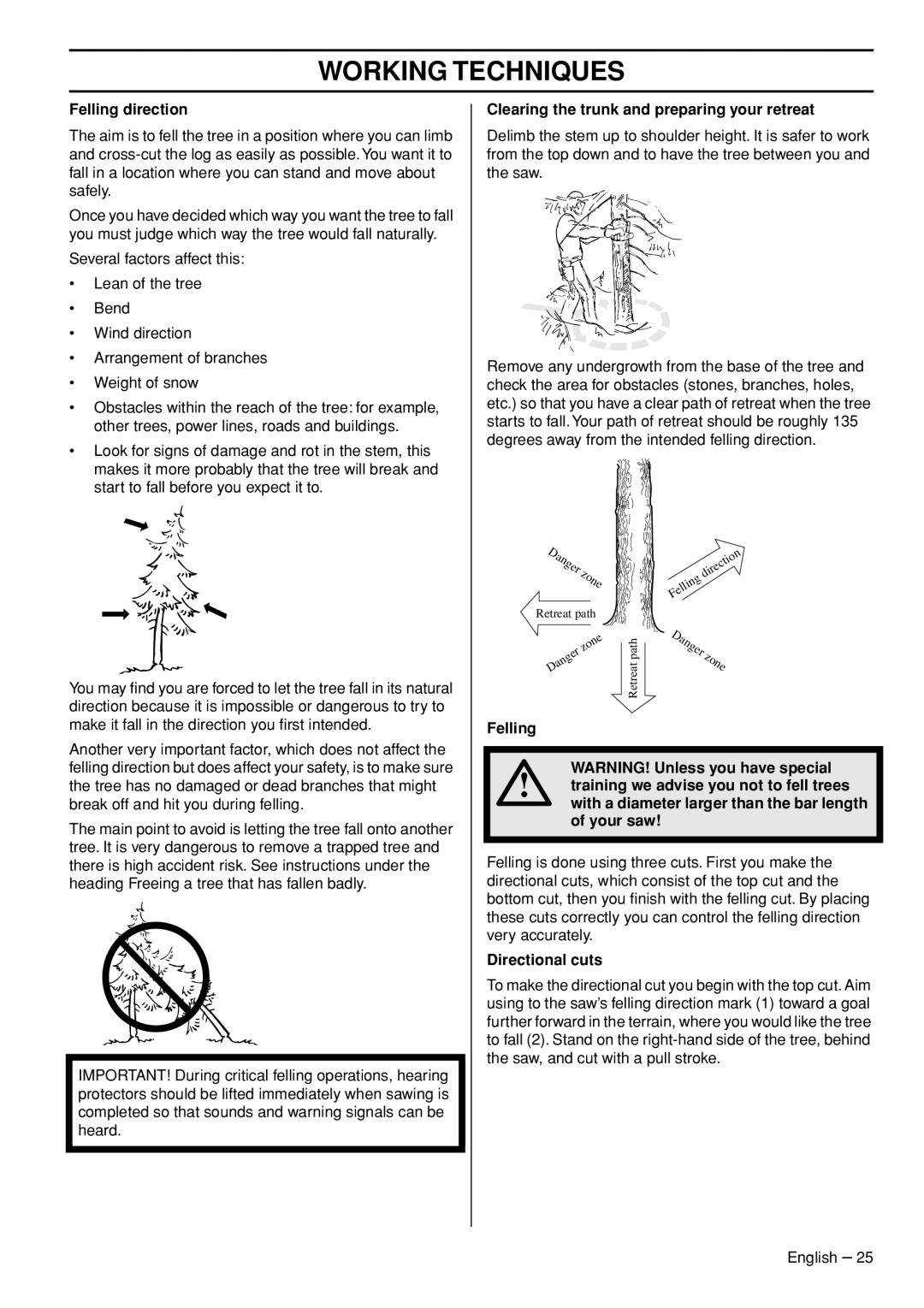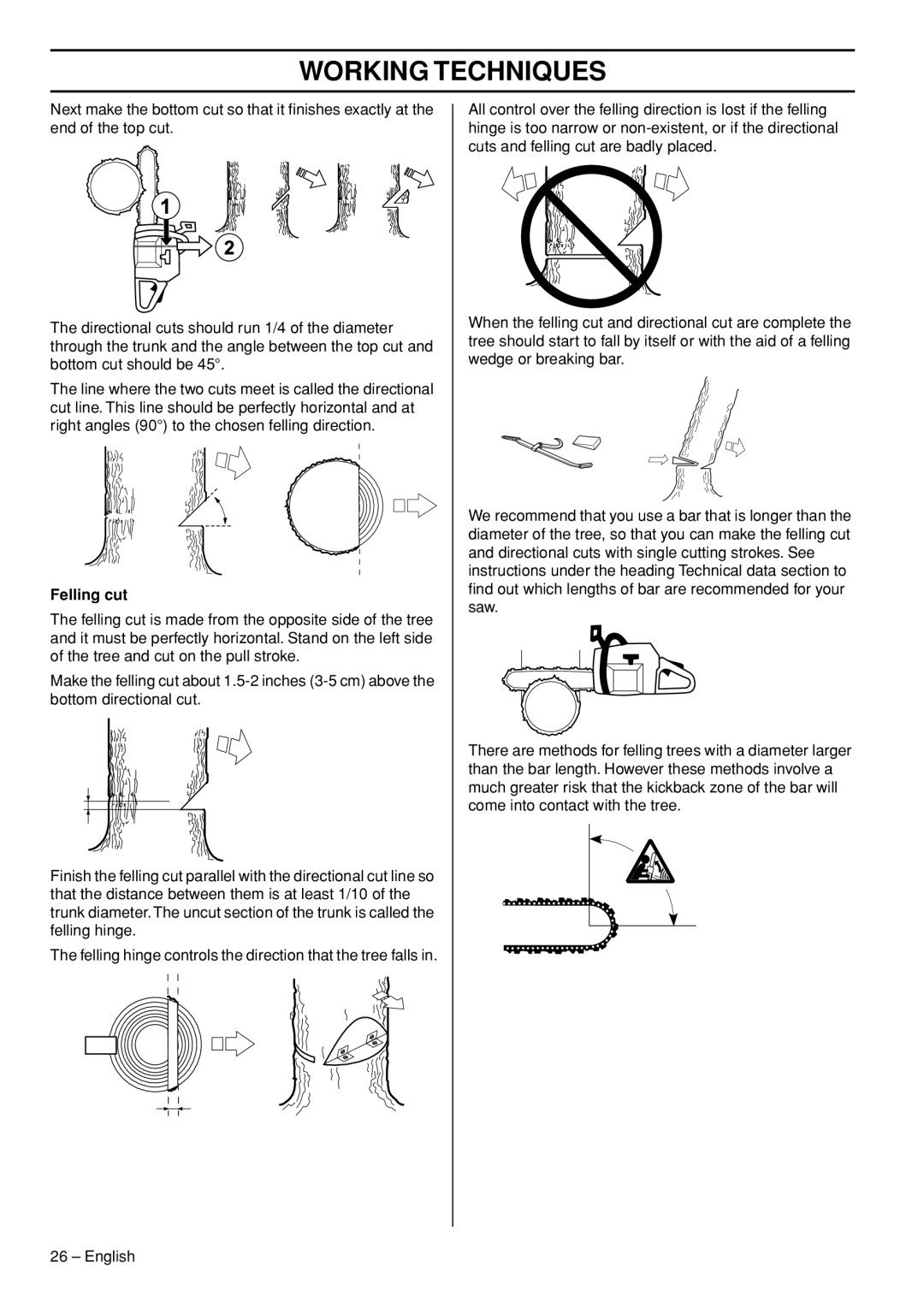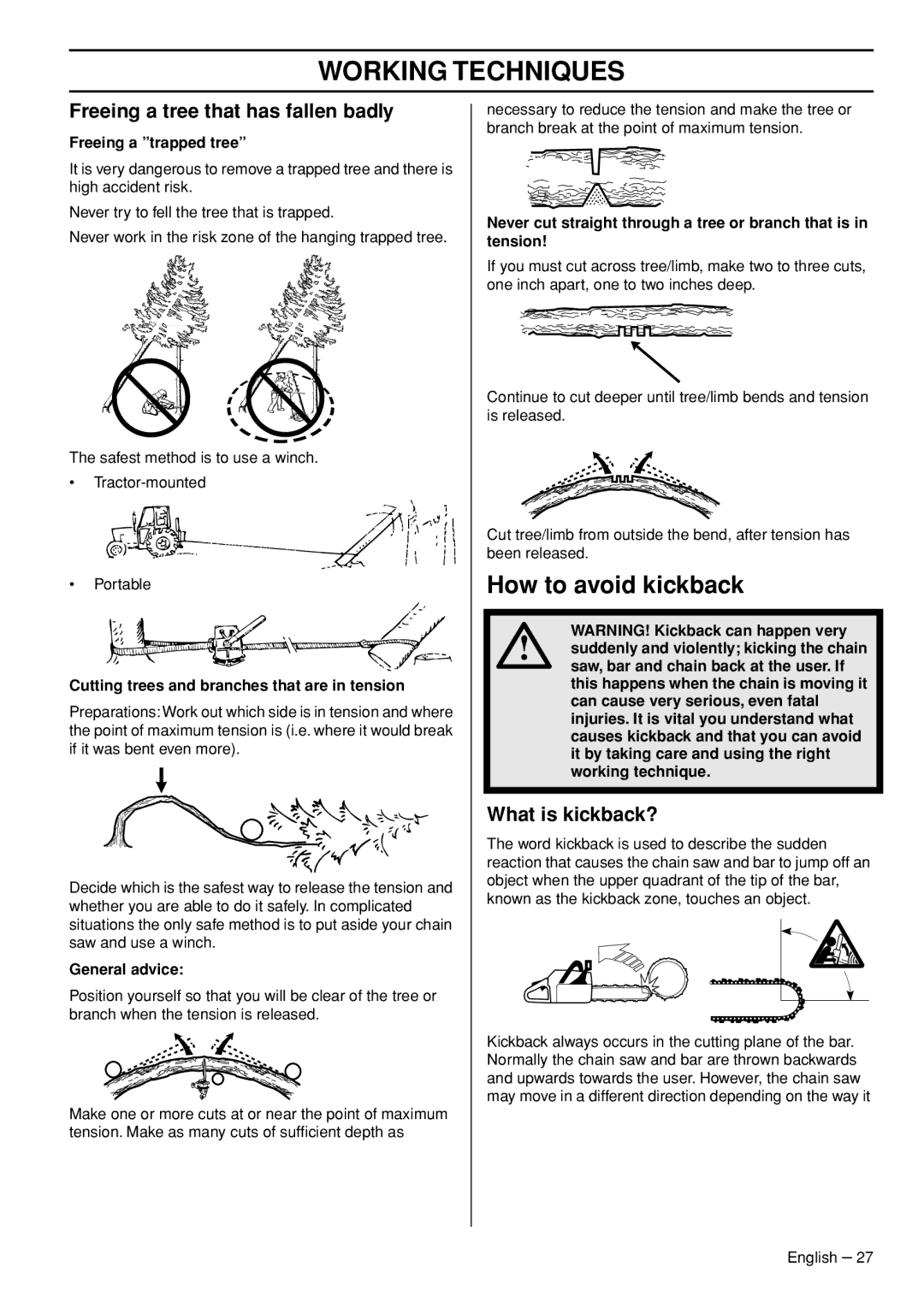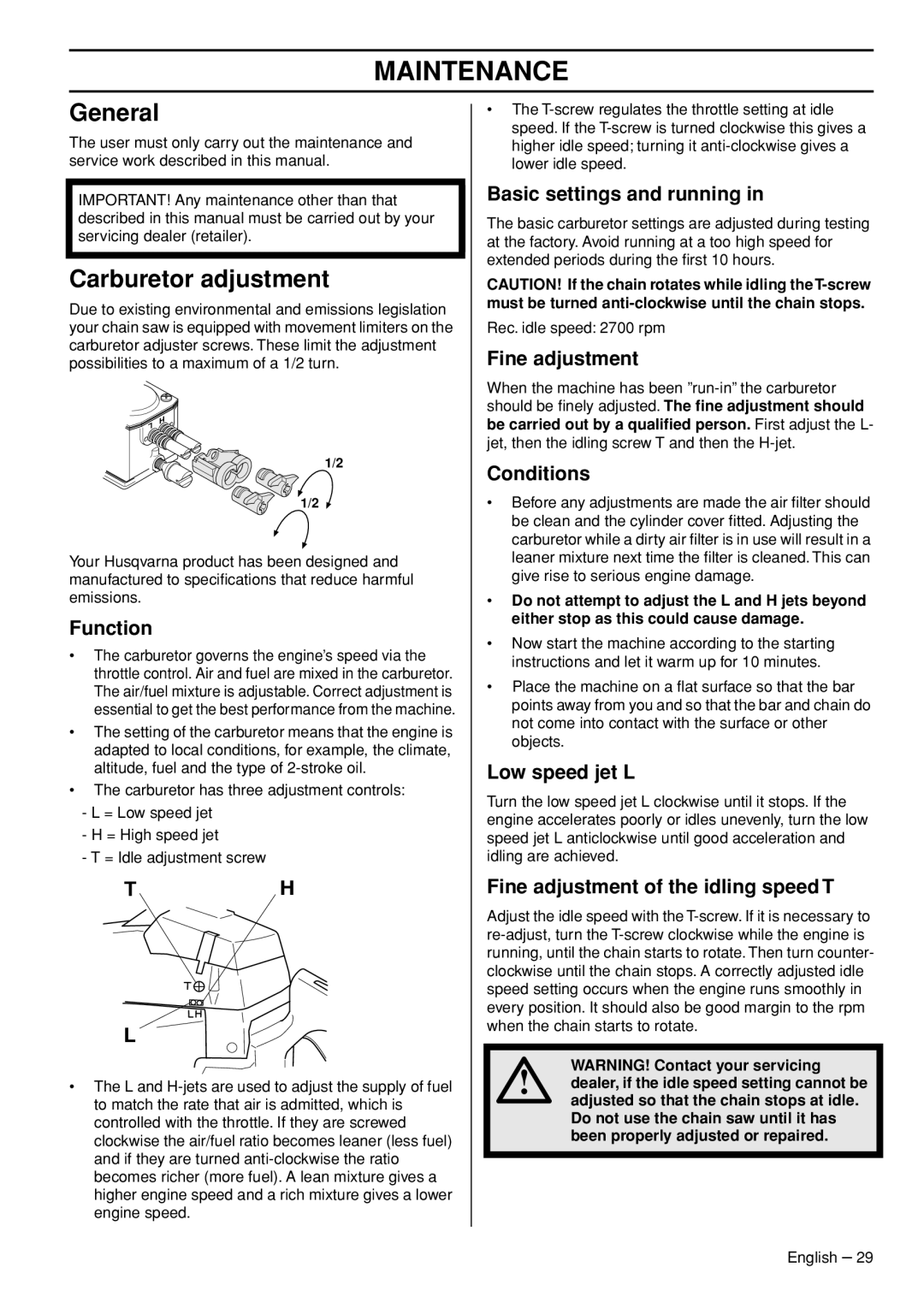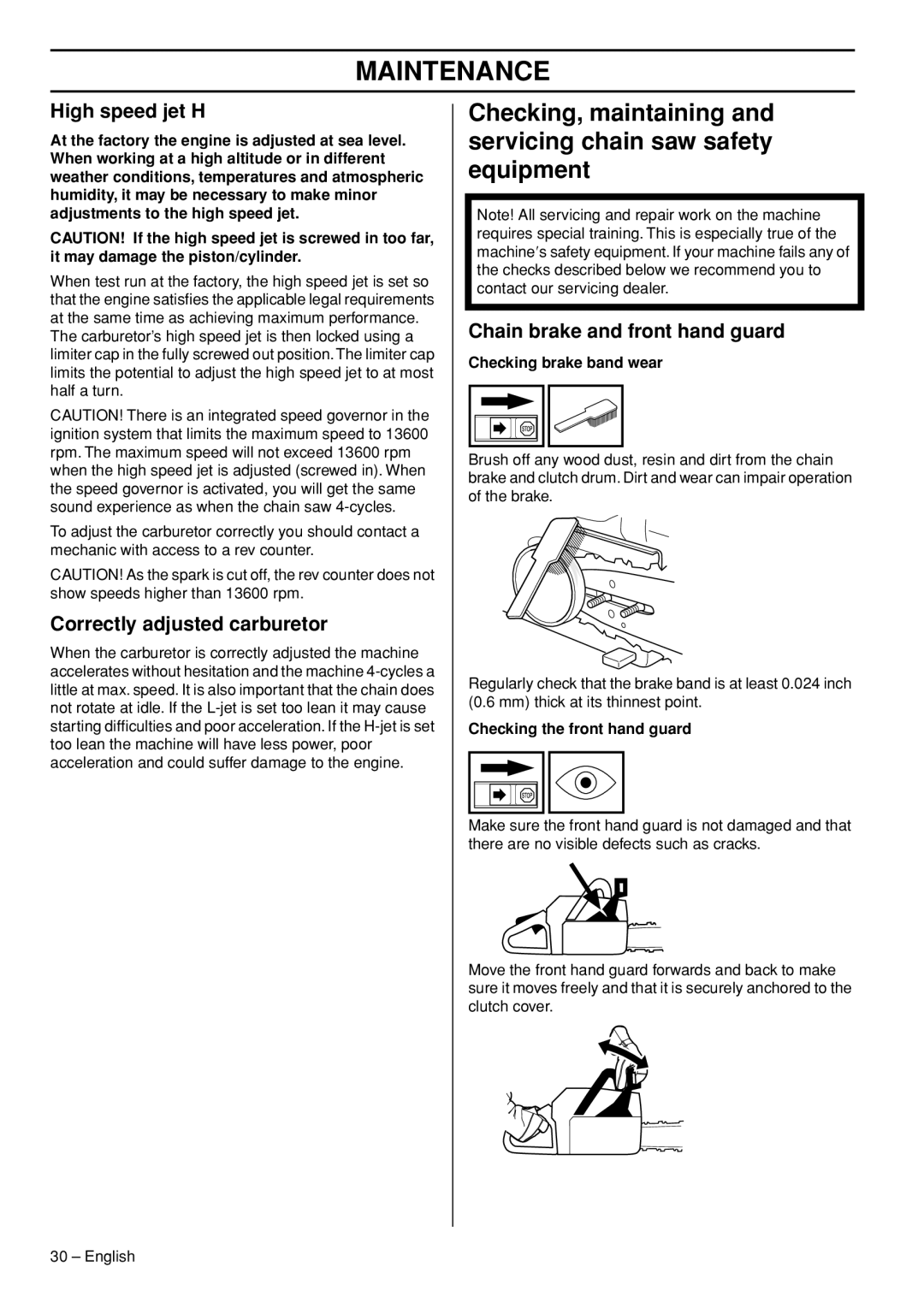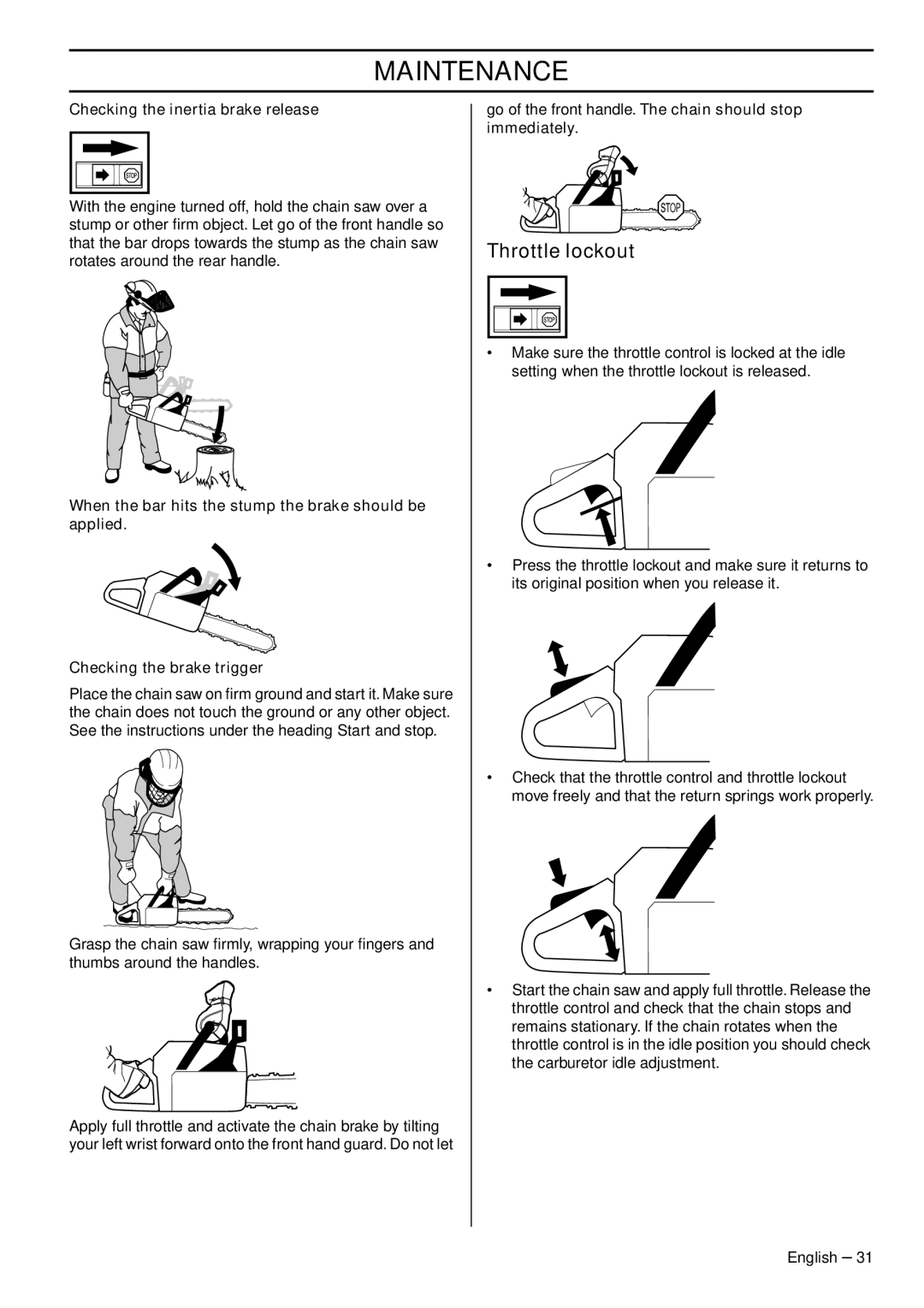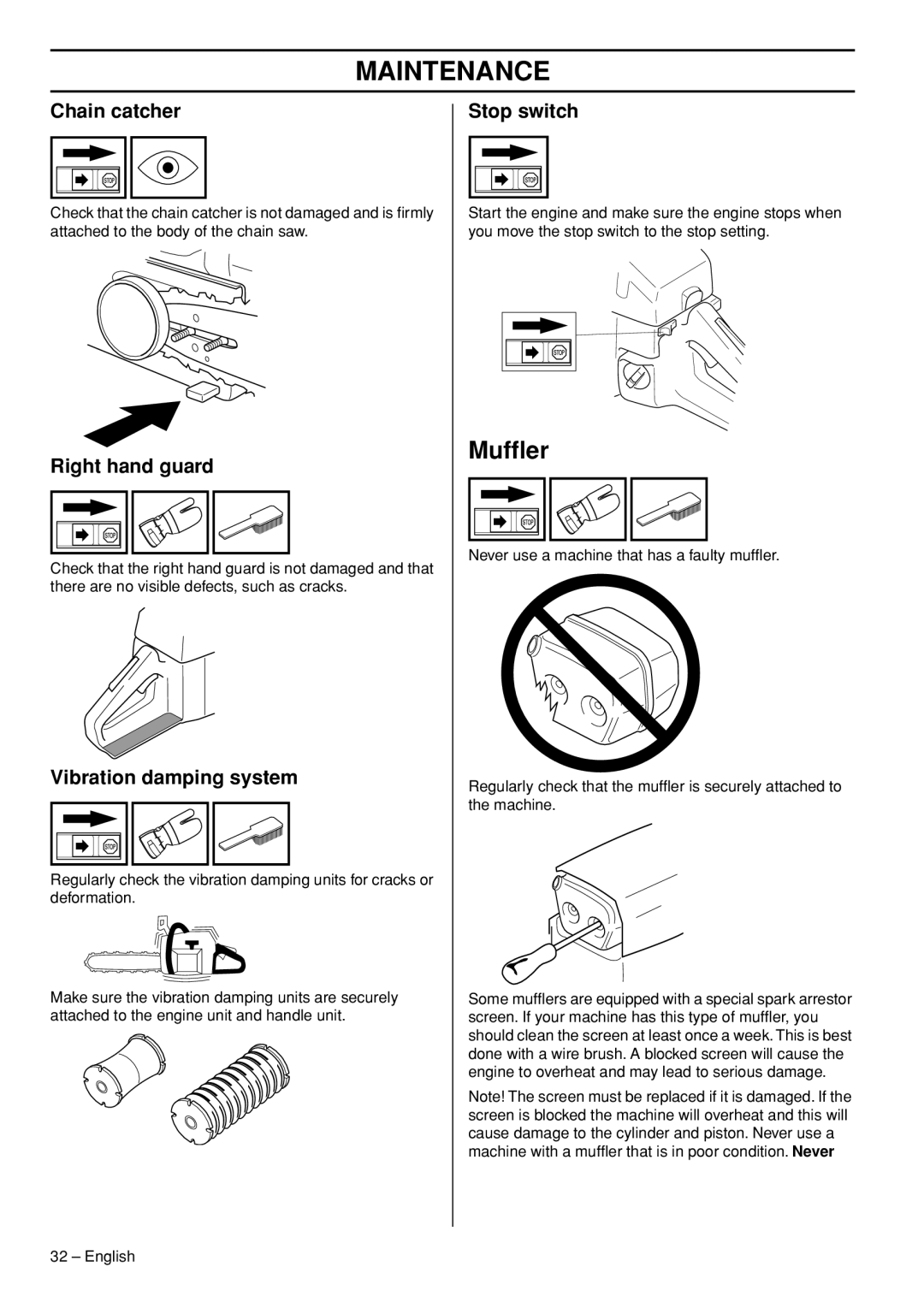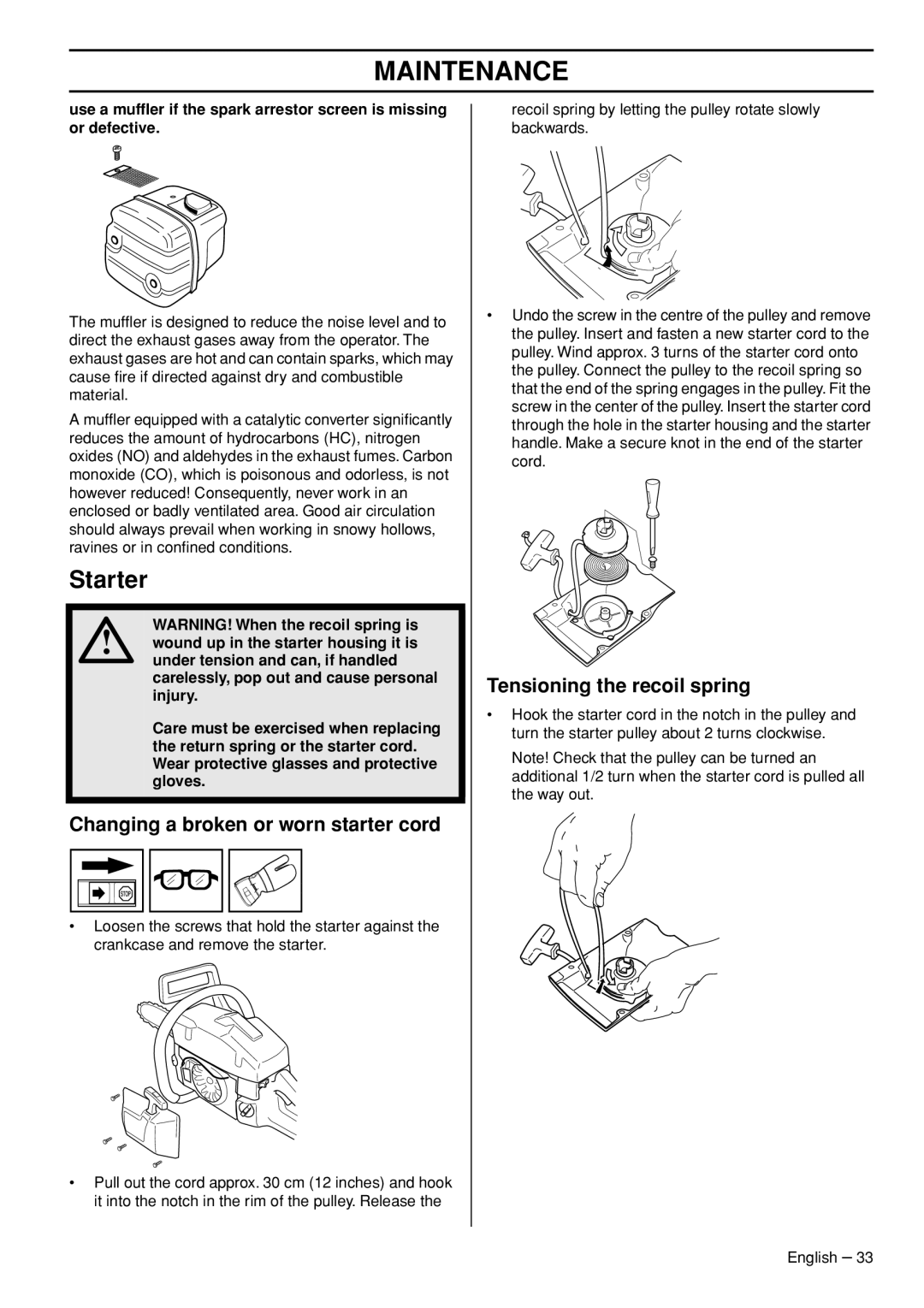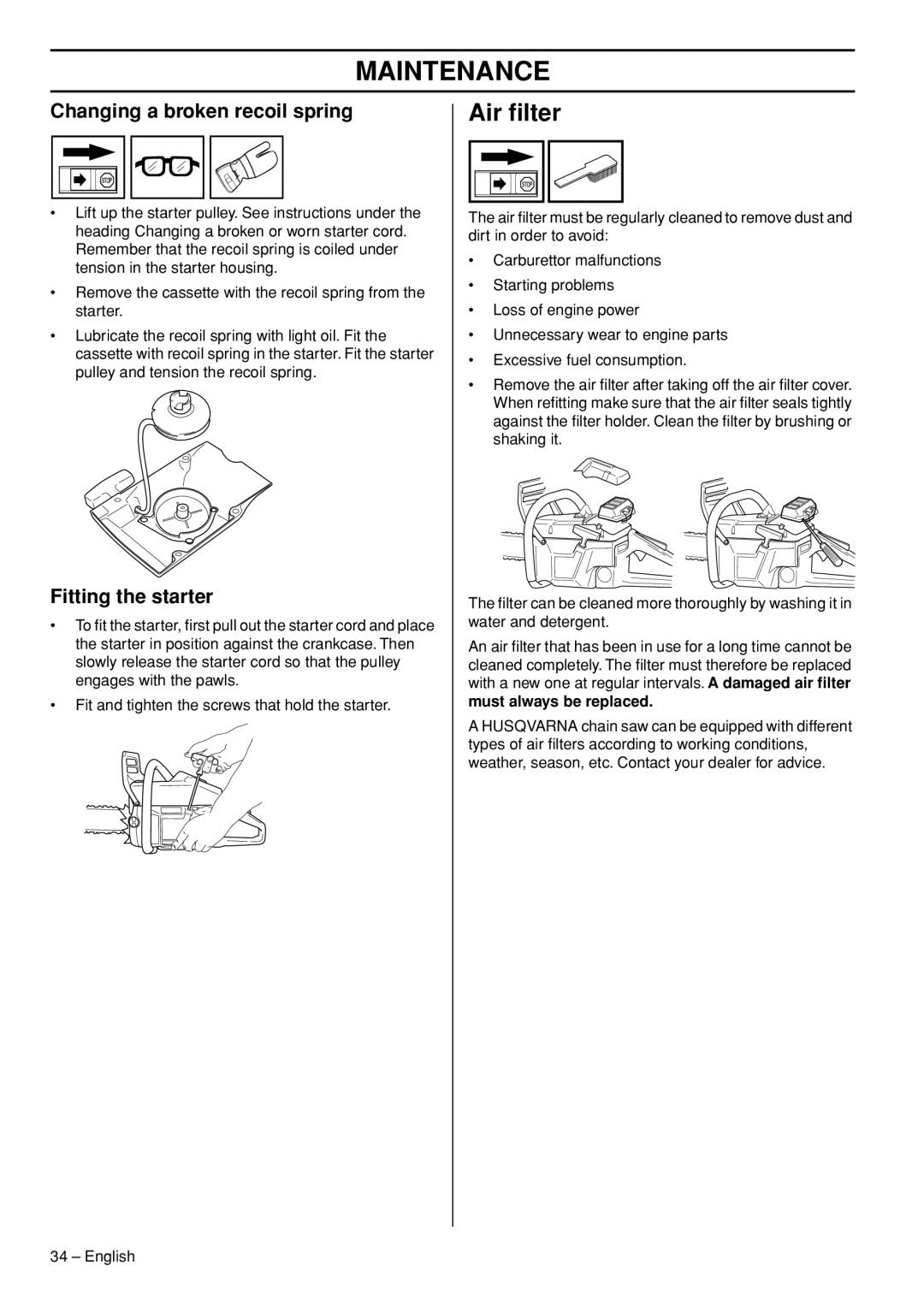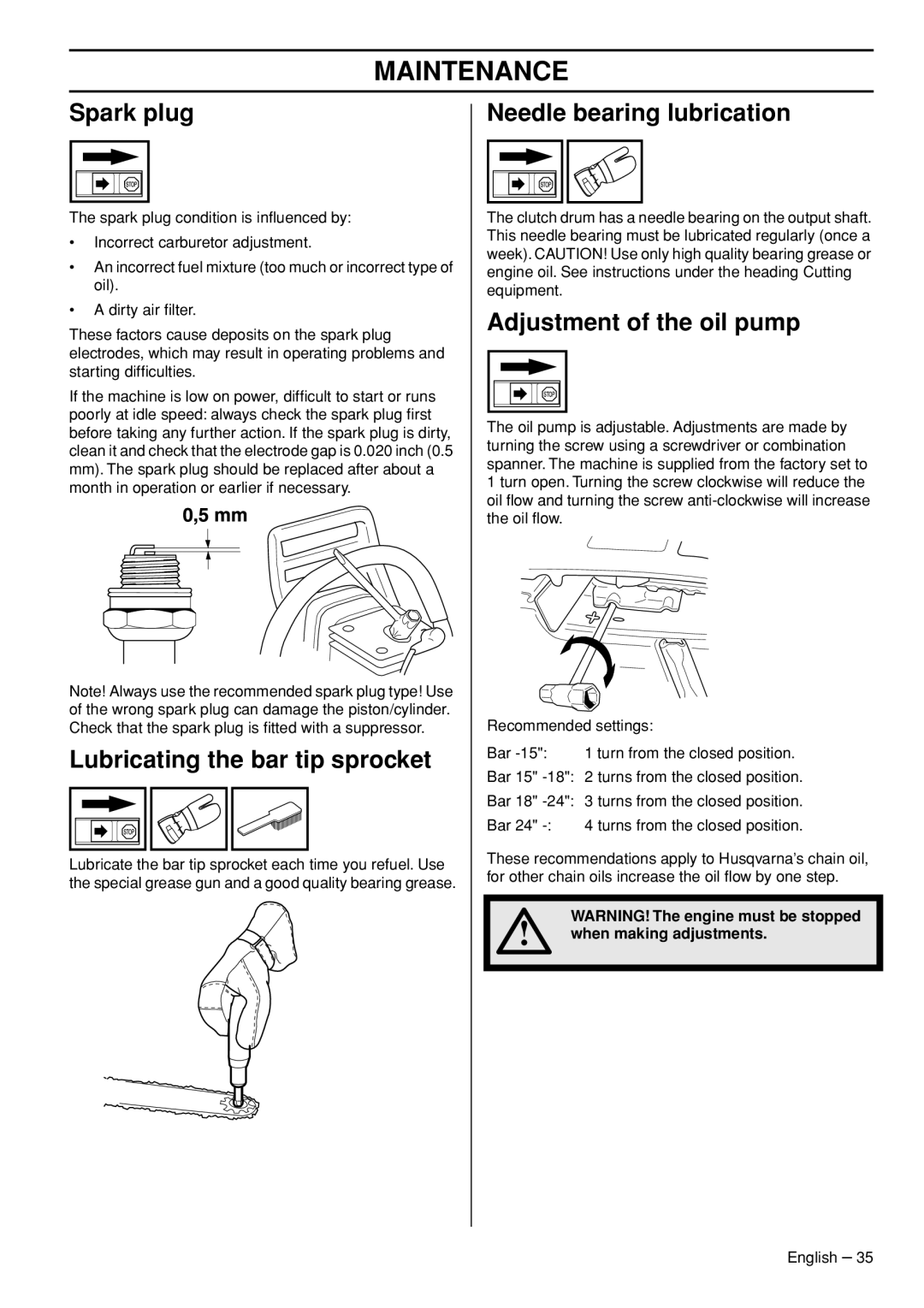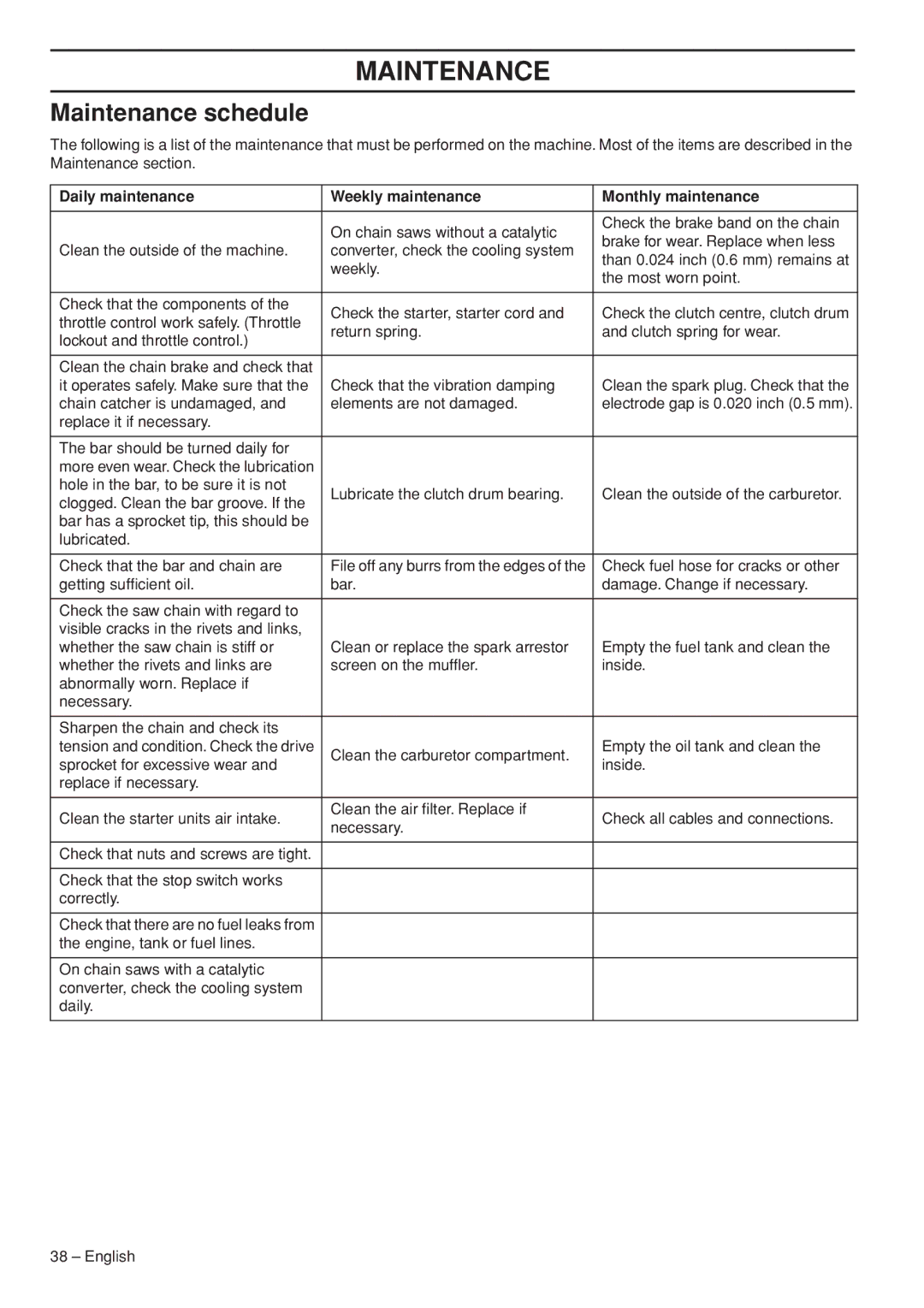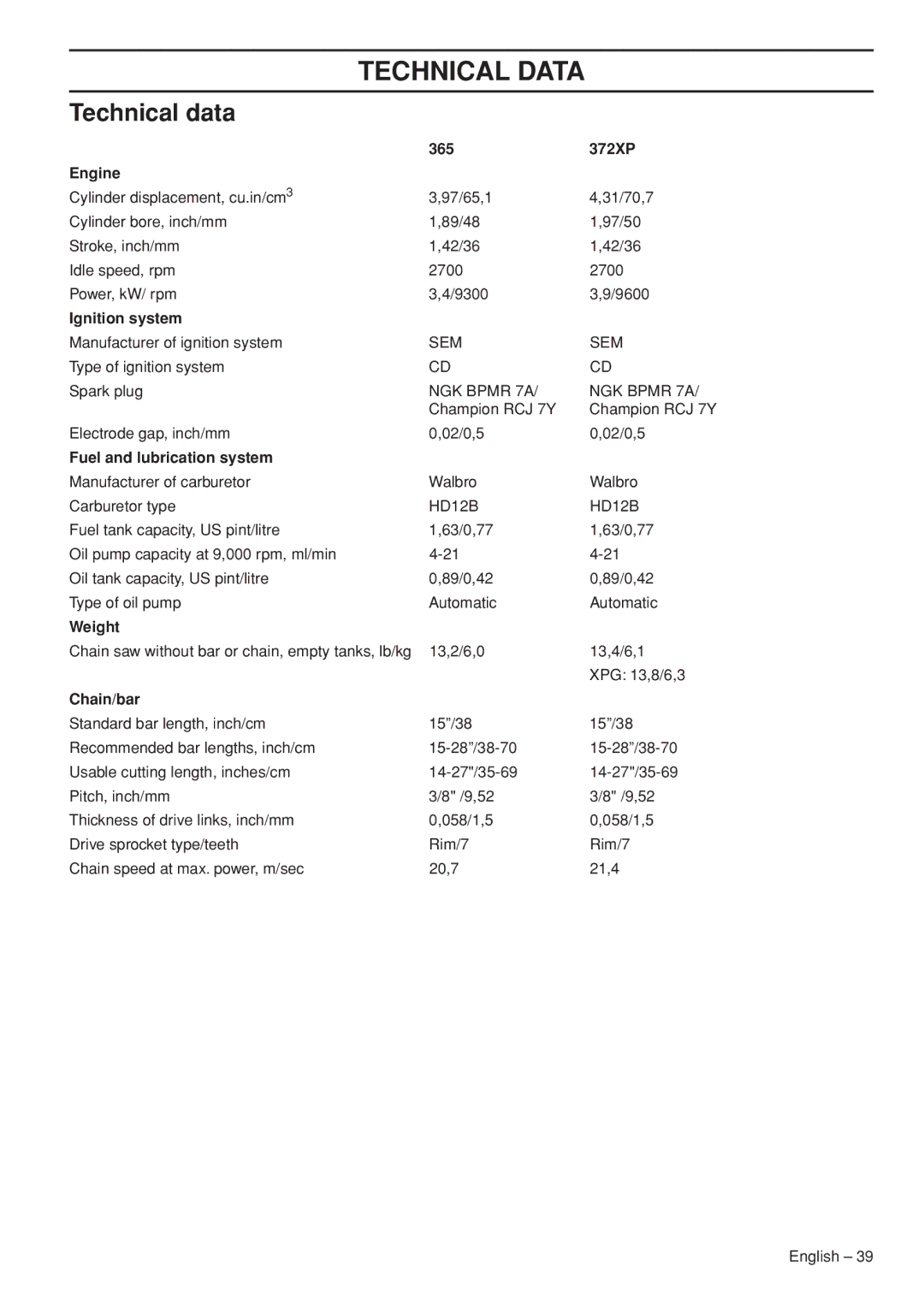
FUEL HANDLING
Fuel
Note! The machine is equipped with a
| ! | WARNING! Always ensure there is |
| adequate ventilation when handling fuel. | |
|
| |
|
|
|
Gasoline
•Use good quality unleaded gasoline.
•CAUTION! Engines equipped with catalytic converters must be run on unleaded fuel mixtures.
•Leaded gasoline will destroy the catalytic converter and it will no longer serve its purpose. The green fuel cap on saws fitted with catalytic converters means that only unleaded gasoline can be used.
•The lowest recommended octane grade is 87 ((RON+MON)/2). If you run the engine on a lower octane grade than 87
•When working with continuous high revs (e.g. limbing) a higher octane is recommended.
Environment fuel
HUSQVARNA recommends the use of alkylate fuel or environmental fuel for
Avoid running at a too high speed for extended periods during the first 10 hours.
Two-stroke oil
•For best results and performance use HUSQVARNA
•Never use
•Never use oil intended for
Mixing ratio
1:50 (2%) for all engines.
Gasoline, litre | |
|
|
| 2% (1:50) |
|
|
5 | 0,10 |
|
|
10 | 0,43/0,20 |
|
|
15 | 0,30 |
|
|
20 | 0,40 |
|
|
US gallon | US fl. oz. |
|
|
1 | 2 1/2 |
|
|
2 1/2 | 6 1/2 |
|
|
5 | 12 7/8 |
|
|
Mixing
•Always mix the gasoline and oil in a clean container intended for fuel.
•Always start by filling half the amount of the gasoline to be used. Then add the entire amount of oil. Mix (shake) the fuel mixture. Add the remaining amount of gasoline.
•Mix (shake) the fuel mixture thoroughly before filling the machine’s fuel tank.
•Do not mix more than one month’s supply of fuel at a time.
•If the machine is not used for some time the fuel tank should be emptied and cleaned.
Chain oil
•We recommend the use of special oil (chain oil) with good adhesion characteristics.
•Never use waste oil. This results in damage to the oil pump, the bar and the chain.
•It is important to use oil of the right grade (suitable viscosity range) to suit the air temperature.
•In temperatures below 32°F (0°C) some oils become too viscous. This can overload the oil pump and result in damage to the oil pump components.
•Contact your service agent when choosing chain oil.
English – 17
